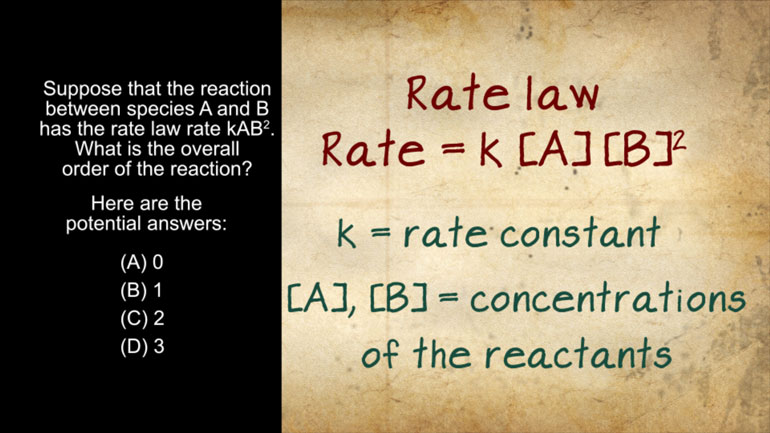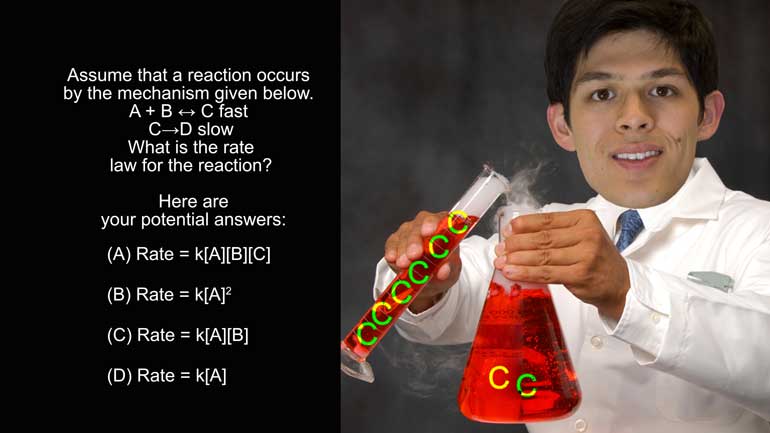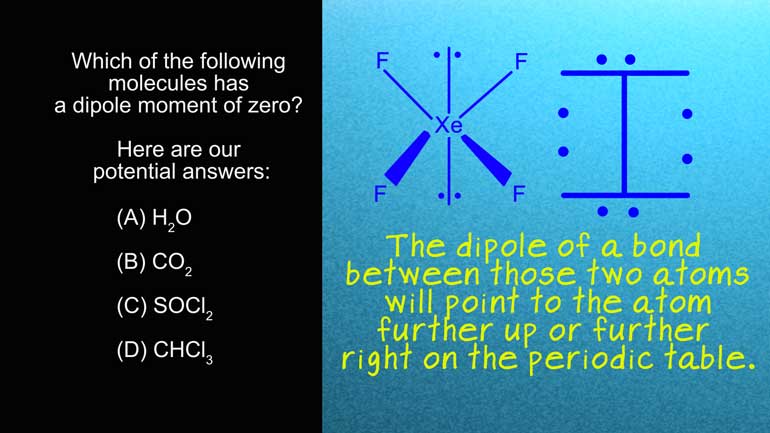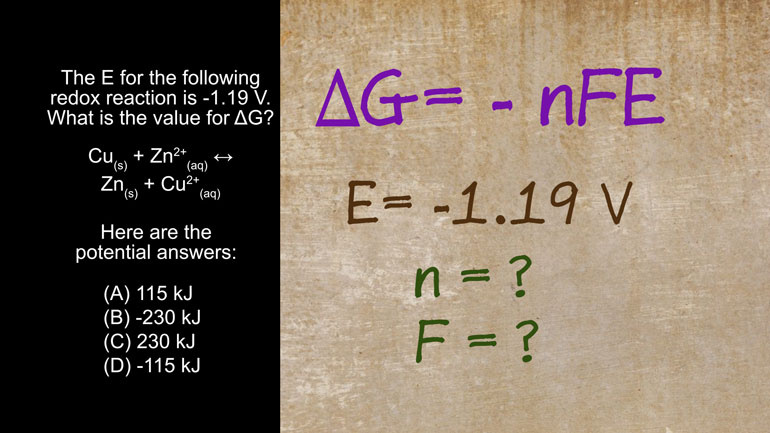ShmoopTube
Where Monty Python meets your 10th grade teacher.
Search Thousands of Shmoop Videos
AP Chemistry 1.1 Chemical Reaction Rates 323 Views
Share It!
Description:
AP® Chemistry: Reaction Rates Drill 1, Problem 1. Which of the following influences the rate of a chemical reaction?
Transcript
- 00:03
Here's your shmoop du jour, brought to you by Catalysts.
- 00:06
Which are generally much more focused than Dogalysts.
- 00:17
Which of the following influences the rate of a chemical reaction?
- 00:25
So we're looking for what affects the rate of a chemical reaction. Other than, you know...
- 00:29
someone cracking a whip and ordering it to hurry the heck up.
Full Transcript
- 00:33
First, let's think about what a chemical reaction is. It's when two or more molecules react
- 00:39
with each other to form a different molecule.
- 00:46
Going even more granular, a reaction takes place when collisions take place between the
- 00:50
reactant particles to form a different arrangement of molecules.
- 00:56
Let's look at the first answer choice. Concentration of reactants.
- 01:01
Reactants are just a fancy name for the molecules that are reacting with each other.
- 01:05
The left side of a chemical equation.
- 01:08
Thinking logically, if we add more molecules
- 01:10
to a solution, because there are more molecules and hence more atoms to collide with each
- 01:15
other, the reaction will typically go faster. Yes, more collisions means faster.
- 01:21
So the concentration affects the rate. But before we just pick answer choice A, let's
- 01:28
keep looking. Answer choice B. The temperature. Temperature
- 01:32
is a measure of the average kinetic energy. Kinetic means movement, so in other words,
- 01:38
temperature affects the number of collisions that take place.
- 01:42
Higher temperatures would help speed up a reaction.
- 01:50
Therefore, Choice (B) is also a true statement.
- 01:52
We know that C must be true because the only
- 01:55
choices we have left are C and D...and answer choice D says ALL OF THE ABOVE.
- 02:00
But let's just take a look at C to be extra sure. The presence of a catalyst.
- 02:06
Well of course a catalyst will influence the speed, or rate, of a chemical reaction.
- 02:11
That's the point of a catalyst...to help the reactants form products faster. So again,
- 02:16
the rate is affected. Our answer's D.
- 02:19
As in, "Dogalyst..."
Up Next
AP Chemistry 1.3 Chemical Reaction Rates. What is the overall order of the reaction?
Related Videos
AP Chemistry 1.4 Chemical Reaction Rates. What are the correct units for a second order rate constant?
AP Chemistry 1.5 Chemical Reaction Rates. What is the rate law for the reaction?
AP Chemistry 3.2 Laws of Thermodynamics. What is the value for ΔG?




